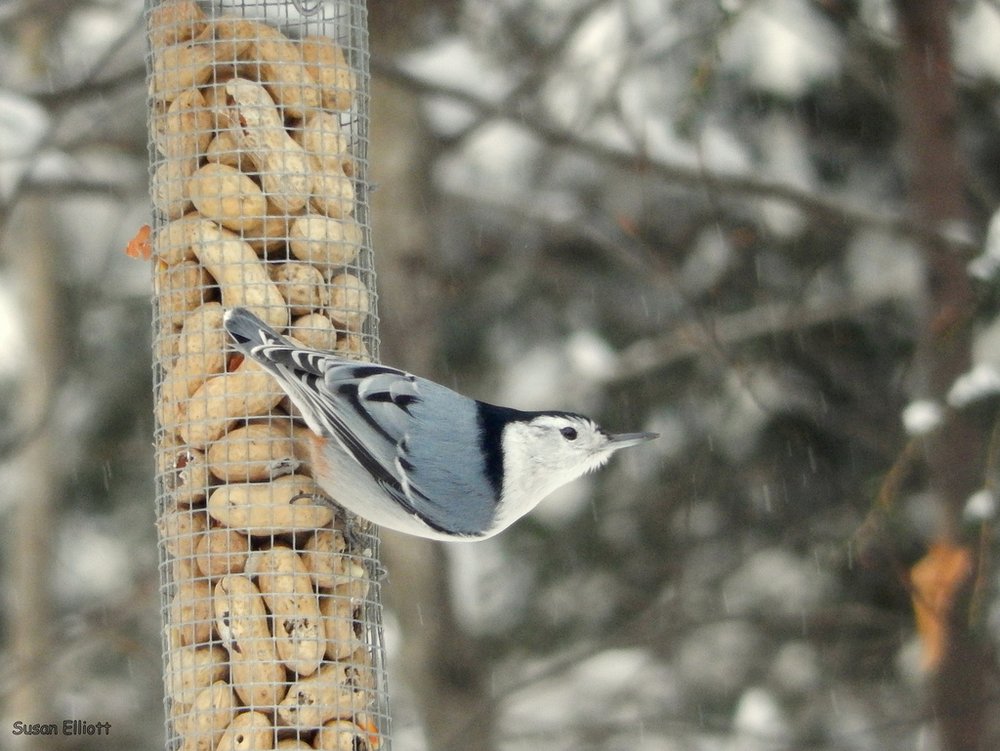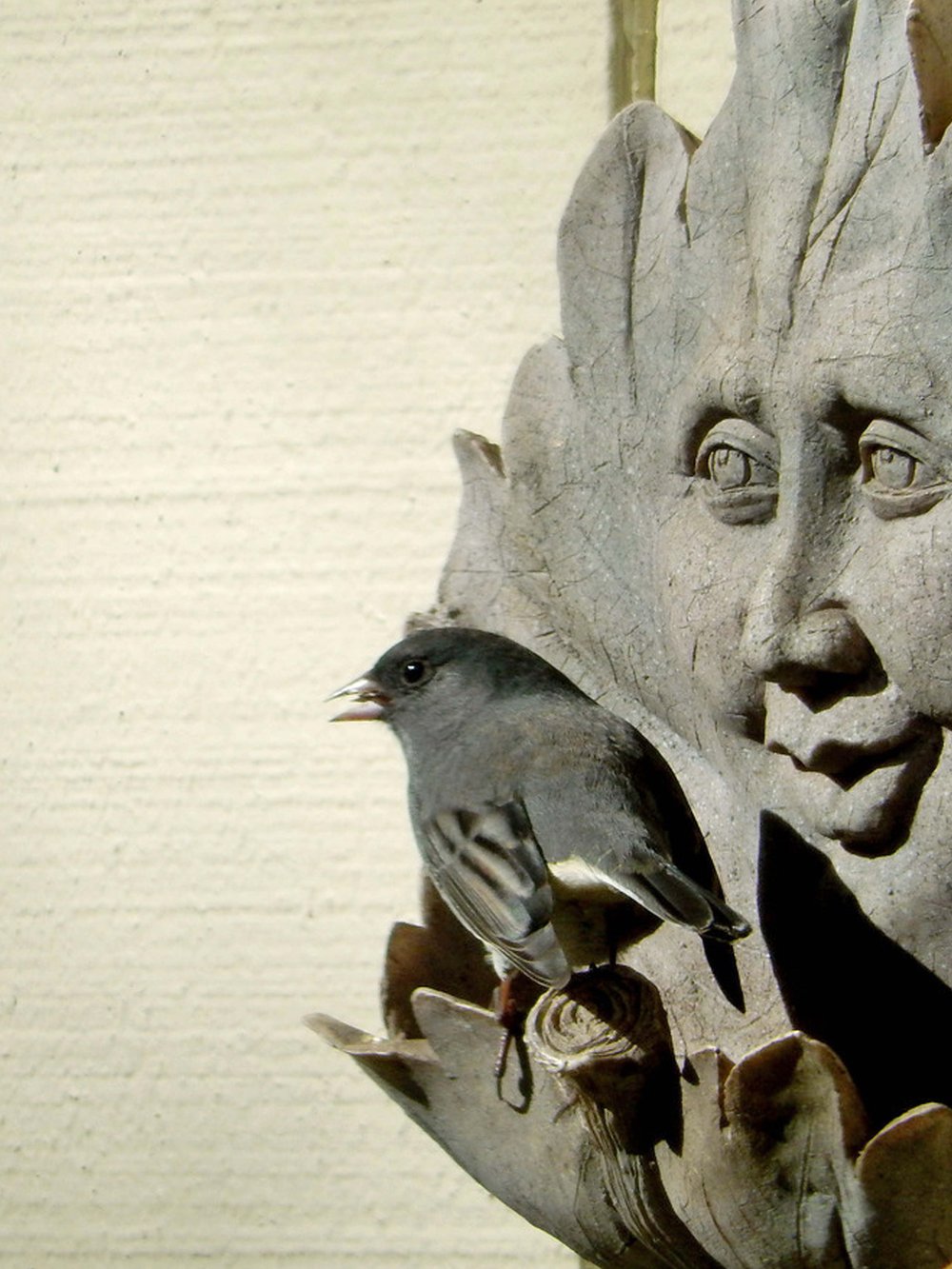 White-breasted NuthatchIt’s time to stock up on birdseed! Join RCAS on Saturday, November 5, for birding banter and an opportunity to purchase birdseed at a great price and without sales tax. And if you haven't joined RCAS, we'd love have you be a part of us.
White-breasted NuthatchIt’s time to stock up on birdseed! Join RCAS on Saturday, November 5, for birding banter and an opportunity to purchase birdseed at a great price and without sales tax. And if you haven't joined RCAS, we'd love have you be a part of us.
We have two locations: Garland’s Farm and Garden on Park Street in Rutland (8 a.m. to 1 p.m.) and Blue Seal Feeds on Route 7 in Brandon (9 a.m. to 2 p.m.). Cash or checks only please!
And since it’s that time of year, it’s worth re-printing our recommendations for keeping a healthy bird feeding area:
Salmonellosis, trichomoniasis, avian pox, aspergillosis, and conjunctivitis are diseases that commonly affect birds that visit backyard bird feeders. Sick birds are less alert and less active. They feed less and often cower on a feeder, reluctant to fly. Their feathers look ill-kept. Sick birds are more vulnerable to starvation, predation, dehydration, and severe weather. Eventually, these diseases are fatal.
 Dark-eyed JuncoDisease is one of the many natural processes affecting wild species. You can minimize the risks and spread of avian diseases at your bird feeders by taking the following precautions:
Dark-eyed JuncoDisease is one of the many natural processes affecting wild species. You can minimize the risks and spread of avian diseases at your bird feeders by taking the following precautions:
1. GIVE THEM SPACE. Avoid crowding by providing ample feeder space. Lots of birds using a single feeder looks wonderful, but crowding is a key factor in spreading disease. Crowding also creates stress that may make birds more vulnerable to disease. Several feeders at wide intervals help disperse the visitors.
2. CLEAN UP WASTES. Keep the feeder area clean of waste food and droppings. A Broom and shovel can accomplish a lot of good, but a vacuum such as you might use in your garage or workshop will help even more.
3. MAKE FEEDERS SAFE. Provide safe feeders without sharp points or edges. Even small scratches and cuts will allow bacteria and viruses to enter otherwise healthy birds.
4. KEEP FEEDERS CLEAN. Use feeders that are made of a material that can be sterilized (e.g., polycarbonate). Clean and disinfect feeders by fully immersing them in a 10% bleach solution (one part household bleach: 9 parts water) for 2-3 minutes. Allow to air dry. Once or twice a month should do, weekly could help more if you notice sick birds at your feeders.
5. USE GOOD FOOD. Discard any food that smells musty, is wet, looks moldy or has fungus growing on it. Disinfect any storage container that holds spoiled food and the scoop used to fill feeders from it.
6. PREVENT CONTAMINATION. Keep rodents out of stored food. Mice can carry and spread some bird diseases without being affected themselves.
7. ACT EARLY. Don’t wait to act until you see sick or dead birds. With good prevention you’ll seldom find sick or dead birds at your feeders.
8. SPREAD THE WORD. Encourage your neighbors who feed birds to follow the same precautions. Birds normally move among feeders and can spread diseases as they go. The safest birdfeeders will be those in communities where neighbors cooperate with equal concern for the birds.
9. BEARS. Also, be sure to delay setting up feeders until the possibility of bears has passed for the year. And if you do have a beer in your neighborhood, take your feeders down immediately (as well as removing any outdoor pet food, garbage and anything that smells intriguing to a bear). And let your neighbors know so they can do the same.